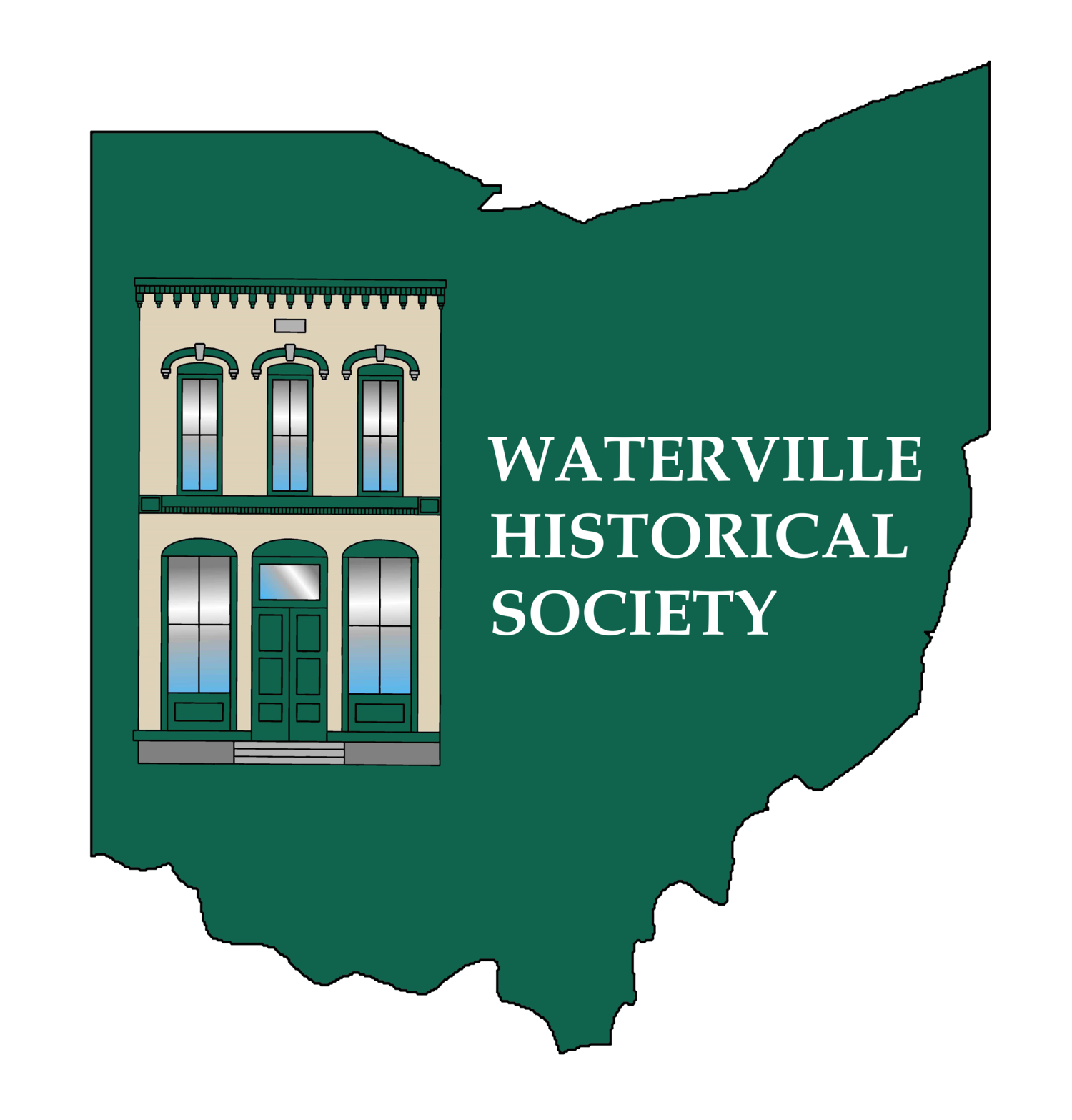The Old Wagon Bridge Collapsed in 1941
Requests for a new bridge in Waterville began in 1935 when the village council wrote to both Wood and Lucas County Commissioners. The old 1887-88 wagon bridge had been repaired in 1904 after two spans were knocked out by flood and ice. In 1926 another section gave way, this time from the weight of a steam shovel. A more urgent request was made in 1937, citing the frequent repairs needed for the recurring holes in the floor of the bridge. The village solicitor also wrote to the Ohio Department of State Highways describing the unsafe condition of the bridge, pointing out that school children were bussed across it twice daily. This resulted in the Lucas County Commissioners passing a resolution citing the urgency of a new bridge in Waterville, but no further action was taken.
Village records in the Wakeman Archives contain carbon copies of these documents, including an April 1938 request from Toledo Attorney E. Donald Demuth, the village solicitor, once more describing the emergency repairs being made after holes repeatedly occur in the bridge floor. A June 21st reply suggested the Toledo Division Engineer of the Department of State Highways be contacted to make the repairs. Of course, these were the years of the Great Depression and funds were scarce. In December 1938, Clerk of Council Ernie Hook warned of a pending collapse in a letter to the Toledo Division Engineer. Two and a half years later his unheeded warning came true when the old bridge went down under the weight of a milk truck.
Two independent milk haulers, Thomas Riegel and Robert Byerly of Millersville, started across the bridge from the Wood County side with their heavily loaded truck on July 24, 1941 and broke through to the bed of the Maumee River. Miraculously, they suffered only minor injuries. Spectators reported that the river ran white with four tons of spilled and ruptured milk cans. Telephone lines and Waterville Gas and Oil lines had crossed the bridge and were pulled down. Waterville citizens were actually glad the bridge collapsed so that their constant demands for a new bridge would now be answered. During that summer, drivers were able to ford the river at low water areas. Painted steel oil drums were placed as markers for the ford route south of Granger Island. However, as Fate would have it, World War II was declared in December following the attack at Pearl Harbor. All steel went into the war effort. A new bridge would have to wait.
New approaches were installed to the abandoned electric trolley bridge at Roche de Boeuf and for the next seven years it was used as a "temporary" crossing. Waterville merchants were so glad for Wood County customers to again be able to patronize their stores, they planned a week of celebration when it opened. But drivers trying to pass each other on the high narrow bridge would find it a harrowing experience, particularly when the wind was blowing hard.
In the summer of 1948 the new bridge was finally built at a cost of more than $485,000. It was opened and dedicated on December 3 with another grand celebration. Mayor Albert Graf welcomed other local and state officials and a large crowd of happy Waterville residents.
Information for this article obtained from documents in the Wakeman Archives, Watervillore by Midge Campbell, and Olde Waterville by June Huffman.
